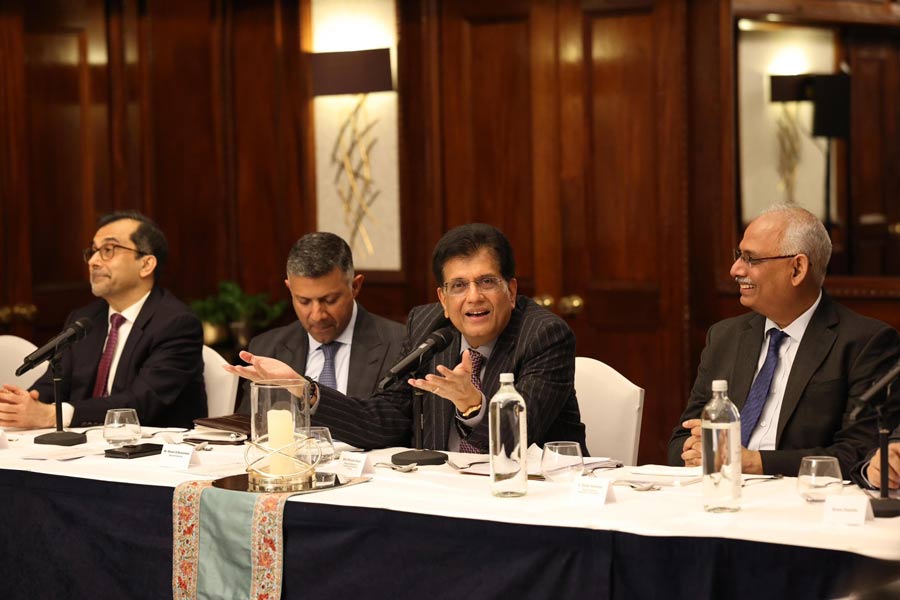It is becoming almost impossible to believe that these increasingly frequent elections are not expensive exercises in futility. The question is not one of stable governments or of one party rule versus coalition rule. Stretching the bounds of optimism a bit, it is even possible to say that frequent elections are the sign of a heaving, restless, vital democracy ? an idea, constantly in motion, trying to adjust itself to rapidly changing realities. That?s not a bad thing at all. If India is the testing ground where democracy in the developing world explores its own nooks and crannies, its dark blots and shining strengths, so it can emerge as meaningful or viable, there is no harm in that. Even if the cost is frequent elections. The sense of growing hopelessness has its source elsewhere.
Democracy is not just a process, it is also a culture. A culture that is shored up by the people through all their differences. These are obvious truths and it is a sign of the times that they have to be repeated. The threat to culture comes from anti-democratic forces that are created and nurtured by the process of democracy itself. What is alarming about the recent attack of Vishwa Hindu Parishad and Bajrang Dal activists on the beauty contest in Gujarat, Miss Vadodara, ?99, is not that it was unexpected but that it was frighteningly predictable.
This kind of thing has happened before, in the spheres of art, religion and popular culture ? the naked bullying, the focussed violence, the confident overriding of authority, law and all mores of civilized behaviour. It is time to ask what has made this repetition possible, with no sign of abatement or compromise. Who is responsible? Only by answering these questions is it possible to identify the source of the sense of hopelessness.
The question is, simply, why is there no real resistance to these anti-democratic forces. Because there isn?t. Or these forces would not have dared to continue to wreak havoc on other people?s freedoms. Why does the very articulate, very fashionable, very vocal anti-fascist, anti-communal, anti-regressiveness rhetoric turn out to be froth in the face of actual assaults from within?
The destruction of a beauty pageant is only one incident in a series of similar occurrences. But it is symptomatic and therefore might be useful in providing a clue to the general mess. If one can bear to look a little closely at the crude rhetoric of the goons, it becomes clear that it turns on two things. The threat of Westernization and the idea of women ? prototypes of ?mothers and sisters? ? parading unclothed on a public stage. The attack cleverly preys on two forms of confusion among the two sets of people one would expect to resist first, feminists and the left. These groups need not be mutually exclusive, of course, neither do they exhaust the entire range of people expected to engage in the problem. But to single them out in this way helps sort out the strands of confusion that seem to be rendering everybody passive.
To take the ?mothers and sisters? argument first. A lot of women?s activists are uncomfortable about beauty pageants: they are an insult to women, and make them an object of the male gaze; they commodify beauty and the vested interests of big brands in beauty pageants underwrite this commodification at the material level, and so on and forth. There is a great deal in what they say and these and their other arguments on the subject must be examined seriously. But the way they act ? or do not act ? upon these arguments points to two inescapable facts.
There is a deep confusion about the attitude to physical beauty itself, a tendency to deny that beauty is a gift like all ?inner? gifts. Why must beauty, in this day and age, still evoke a moralistic response, the age old ?skin deep? syndrome?
And the other problem is the hackneyed, but still relevant, issue of freedom. Objecting to beauty pageants on the basis of the commodification of the female body argument is to assume that women who participate in beauty pageants are passive objects or unthinking morons or both. Given these confusions, it is possible to stomach other reductive insults, that is, to allow the role of women to be confined to those of mothers and sisters alone, even if a beauty pageant is unlawfully destroyed.
The Westernization argument too finds echoes in intellectually exalted circles. After all, women in India were brought up on the principle of self-effacing modesty. And where they did do something remarkable in the public arena at all their achievements had nothing to do with looks and shapes and measurements. Not till recently anyway, and that?s when the trouble began. So it can be proved that this big bad bogey called the ?West? is subverting ?our? culture, it has immeasurable envy for ?our? culture because it cannot achieve its materialistic objectives as long as these values remain in place. This is not very far from the commodification argument, only the approach offers a slight variant.
It is not as if these attitudes emanate solely from the people who belong identifiably to the two groups that have been mentioned. The situation often seems hopeless because a very large number of thinking persons give conscious or unconscious expression to such thoughts. The confusions have one result: complicity. The inconsistencies, which have of course been oversimplified for the sake of the general argument, breed passivity, but not that alone. People spouting anti-fascist rhetoric seem comfortable with an organized gang of hooligans acting out their desires for them, giving weight and shape to one side of their warring minds, absolving them of the need to act.
It is comfortable to sit back and vilify these unlawful anti-democratic forces ? even the police can?t do anything about them, and anyway, we always knew policemen were corrupt and useless and agents of their political masters. No resistance is possible, because no resistance is desired ? out there is simply a group of goons doing other people?s dirty work for them.
It is possible to trace similar divisions, a similar silent support to the enactment of deepseated irrationalities, prejudices and uneducated folly in earlier incidents, such as the destruction of M.F. Husain?s paintings. The phenomenon is that of a shameful abdication of responsibility, a moral cowardice and a mental laziness that refuse to tackle a complicated situation head on, to think through knotty problems strictly and objectively to the end. All the loudly voiced beliefs about an artist?s freedom do not always silence the secret murmurs of community prejudice and suspicion deep within.
There is also the tussle between ?political correctness? and the fear to be seen as part of the ?appeasement? brigade. Yet all these nonsensical phrases can be emptied of their biased content with a little clear thinking and hard action. It is not a question of whether or not Husain did the right thing by painting a Hindu goddess naked, or whatever else it was that he did. One has to keep asking what kind of society one is voting for and to keep fighting for it. That too many of us have failed in this too many times is proved by the destruction of Miss Vadodara ?99.
These were random examples. It sounds ridiculous that the vandalization of a beauty pageant should be the symptom of a threat to a democracy. But even a little exaggeration is not out of place here. This kind of thing will grow ? if there is no resistance. It has to be stopped. Now.
 Tuesday, 29 April 2025
Tuesday, 29 April 2025










